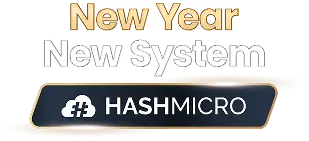When I look at the challenges engineers face, such as managing Bills of Materials (BOMs), automating routing steps, and integrating CAD systems, I see how essential Engineering ERP software becomes. This solution is specifically designed to meet those needs while connecting the engineering department with the rest of the organization.
By integrating departments and streamlining processes, ERP software enhances efficiency and ensures smoother collaboration across the business. It enables teams to maintain accuracy, reduce manual effort, and optimize overall operations.
Ultimately, ERP helps businesses overcome challenges, uphold quality standards, meet client expectations, and remain competitive. With automated workflows and real-time insights, it supports smarter decision-making and drives sustainable growth.
Elevate your engineering operations with a tailored solution, request a free demo today and experience the value of ERP firsthand.
Key Takeaways
|

What Features Should an ERP Have For Manufacturers?
The manufacturing industry is unique, and manufacturers want an ERP with features and functionalities designed to fulfill their demands. Common ERP system requirements for manufacturing are inventory management, accounting, scheduling, and production planning, including quoting and estimating. HashMicro, as an ERP solution provider, offers manufacturing software that meets the needs of the manufacturing industry.
Manufacturing is also one of the most data-heavy industries. By leveraging ERP, I can gain deeper insights into company performance through data gathering and analysis, helping boost efficiency and create a competitive advantage. To ensure suitability, I would review the Manufacturing Software pricing scheme calculations from HashMicro before implementation.
Why Does an ERP System Matter for ETO Manufacturers?
ETO (or engineer-to-order) manufacturers are unique because they always develop, construct, create, and produce distinctive and customized products. This brings particular issues for ETOm manufacturers. Also, you will need an ERP with the proper built-in modules to help you meet requirements and run your business efficiently.
But the engineering department is often left out of the loop by ERP, even those made for the manufacturing industry. Most manufacturing ERPs connect accounting, purchasing, scheduling, and inventory management to optimize manufacturing operations, but the engineering department is left out. It plays a significant role in designing, creating, and manufacturing a product. I’ve experienced how frustrating it can be when engineering isn’t fully integrated, as it slows down collaboration and creates inefficiencies.
This implies that engineers must retrieve and re-enter information from and into spreadsheets, CAD software, and other systems. This consumes time, increases human error, and reduces the engineering department’s production and efficiency.
What Do Engineers Need Out of Their ERP System?

Creating a bill of materials (BOM) is one of the engineering department’s most complex and time-consuming processes. Many manufacturing ERP will require the engineering department to painstakingly take a CAD drawing, create a list of all the items that are required, and then create the BOM.
To get this data synchronized with the rest of the ERP, it must also be re-keyed into the system. Some advanced manufacturing ERP systems can connect your CAD program directly to the ERP, saving you time and effort.
This eliminates the aforementioned processes and allows your ERP system to communicate directly with CAD. I find this capability extremely valuable because it reduces errors and helps me focus more on innovation rather than repetitive tasks.
The designs and drawings that your engineering department develops in CAD can automatically be extracted and converted into a BOM by ERP systems that are engineered to interface with CAD software. This saves your engineers time and streamlines the purchasing, requisitioning, and manufacturing processes.
To bridge the gap between your engineering department and ERP, consider integrating a Creo CAD solution. This kind of integration enables seamless transfer of data from CAD drawings to ERP systems, streamlining processes like creating Bills of Materials (BOM) and reducing errors.
Your engineers and draftspeople will no longer waste time manually creating BOMs. There will be fewer errors, and your BOMs will be linked to important systems like inventory management. This makes it easier to know what parts are needed and what to be ordered to get a job built and out the door.
Increased Customization is a New Challenge

You may also have noticed that your engineering department’s responsibilities have evolved recently. In the past, your draftsmen supplied your shop with drawings based on the specifications given by your customers. However, you may now find that many of your clients are designing their products.
This trend has pushed you as a manufacturer to learn more about designing, assembling, and manufacturing parts more efficiently and cost-effectively, as well as how to follow Design for Manufacturing (DFM) principles. This means you probably have more people working in the engineering room than before.
Now you need to go beyond the fundamental design procedures you employed in the past to meet the demands of the modern workplace. I’ve seen this shift firsthand, and it reinforces why I need ERP and CAD integration to keep up with evolving customer demands.
After determining what will be purchased or manufactured, the next step is to define the routing stages. To speed up the process once the design is complete and reduce the possibility of mistakes on the production floor. Now, many manufacturers are handling the routing stages and instructions right from the 3-D CAD Software. A connected ERP and CAD solution will help you manage this process and automate routing.
Custom-built or customized ERP software can sometimes solve problems that off-the-shelf software can’t because of the company’s specifics. You can include elements specific to your company and its operations.
Also Read: Best ERP Software Recommendations – Explore the best software options available this year and find the right fit for your business needs.
Conclusion
ERP is capable of creating high data integrity, increasing your efficiency, and bringing your business process automation. It can help the engineering design team streamline their workflow and see the entire process.
ERP software is a suite of business applications that work together to automate a company’s operations. Manufacturing companies have different ERP systems in comparison to other industries. An ERP requires its own set of engineering principles, and a customized ERP is better because it will be designed to meet their needs specifically.
HashMicro ERP software offers ERP Systems that are adaptable to your business’s structure, category, objectives, and special requirements. Want to find out why our clients have such high expectations of us? Find out right away by starting your free demo
FAQ About Engineering ERP Software
-
What is an ERP in engineering?
Enterprise Resource Planning (ERP) is software used by organizations, including engineering departments, to manage and integrate key business processes like procurement, inventory, manufacturing, finance, and human resources in a unified system. It provides a single source of truth and real-time data across all operations.
-
What are the 5 biggest challenges of ERP implementation?
The top challenges include:
1. Poor planning and unclear requirements
2. Resistance to change or low user adoption
3. Data migration and quality issues
4. Complexity of customization and integration
5. Insufficient training and stakeholder involvement -
What are the 5 components of an ERP system?
According to technical sources, five core components/modules of an ERP system often include:
1. Finance & Accounting
2. Human Resources (HR)
3. Supply Chain & Inventory Management
4. Manufacturing / Production Planning & Control
5. Customer Relationship Management (CRM) or Sales & Order Processing.













